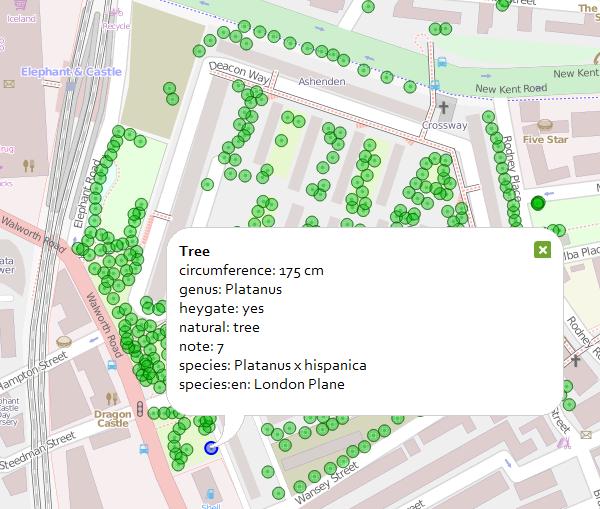Using digital tools to build local activism
In the previous post, I shared examples of how social media has been used to garner support for national and international campaigns. In this post we feature examples of social media being used to bring people together to campaign or challenge local issues.
Local digital activism can be based on a geographical community or around a shared local interest, or both. There is an abundance of hyper-local websites out there. Some act as online directories and forums for local discussions, others as a place to discuss whatever local issues matter to the members. Some examples include:
- Harringay Online, which has 2,200 members and has been running since the end of July 2007. It acts as a forum for people in the neighbourhood “to get to know each other better and collaborate on anything – local sports teams, pressure groups, social groups – you name it”;
- Peterborough’s Polish language site, which acts as a go-to place for Polish people living in Peterborough;
- Fairstead.org, which aims to get local people talking on issues that matter to them, with local Councillors feeding into discussions where they can help; and
- East Dulwich Forum, which was launched in 2006 by a local council officer who built the site in his spare time. In July 2010 it had almost 2 million hits, had over 15,000 members and received around 500 posts per day. Mark Collins, the site’s creator, explained that it works because it’s fun, useful and allows users to decide on the content.
Other community websites have been developed to bring local people together to lobby decision makers on very specific issues.
The Elephant Amenity Network, a hyper-local network of people and businesses, was formed in March 2009 in response to the new regeneration plans of Southwark Council. The Network launched a local Charter and a coalition of local groups and businesses in the Elephant and Castle area of London to campaign to preserve local shops, social housing and open space. A dedicated website provides news and updates on the campaign, the regeneration plans, meeting dates, information leaflets and the Charter.
 In an aim to save local green space and the urban forest that has grown in a local estate, the Network recruited a technology expert to help them map the trees of the estate. Online maps and tools were used to create the Heygate Forest Map which provides information on the circumference, genus and species of every tree on the estate. This allowed others to use Capital Asset Value for Amenity Trees (CAVAT) to value the trees at approximately £11.7m.
In an aim to save local green space and the urban forest that has grown in a local estate, the Network recruited a technology expert to help them map the trees of the estate. Online maps and tools were used to create the Heygate Forest Map which provides information on the circumference, genus and species of every tree on the estate. This allowed others to use Capital Asset Value for Amenity Trees (CAVAT) to value the trees at approximately £11.7m.
Unlike the Elephant Amenity Network which focuses on a neighbourhood, a campaign established in Preston spans the whole city, calling on Prestonians to join in a campaign against the demolition of Preston Bus Station.
A campaign has been launched on Louder, an e-campaigning website, which asks people to sign the petition to refurbish and redevelop the current bus station rather than demolish it. A dedicated website was launched in January 2011 to highlight the plight of Preston bus station, and includes articles, blog posts, photographs, art inspired by the bus station, architecture competitions and links to the related Facebook group to help fight the cause.
Along with the national and international examples from the previous post, examples such as those above show how important it is to use a variety of online tools. Successful campaigns tend not to be carried out using just one method, or purely online, but rather by making use of mobile technology, the internet and physical action.
Through the Building Local Activism programme, funded through the Big Lottery Fund’s People Powered Change initiative, we will be working with six communities across England to help them map who lives locally, identify local issues, and use digital technology to build community activism.
For more information, visit: http://www.youngfoundation.org/our-work/web/building-local-activism/building-local-activism
Thanks for the mention. By way of a wee update, Harringay Online has approaching 5,000 members today, but our associated Twitter stream and Facebook page are fast becoming key complimentary channels.
A wonderful little story recently when some local folk used the site to organise a flash cleanup of a local park hit by the spending cuts – from idea to execution in 48 hours! http://www.harringayonline.com/forum/topics/fairland-park-gets-a-spring
Good to hear from you.
It’s great to hear what getting together online can bring, and how tying into other channels is also helping. Thanks for sharing.
For those on Twitter and Facebook here are the links: http://twitter.com/harringayonline and https://www.facebook.com/HarringayOnline
Interesting post thanks. Useful link to the Peterborough site. Does anyone know of other local foreign language sites?
People interested in this area may find it useful to look at our very well received research on the impact of neighbourhood websites and the implications for public service providers – http://networkedneighbourhoods.com/?page_id=409
Hi Hugh,
http://www.wakefield.pl/ is the only other one I have come across – again it’s in Polish!
Thanks for the link Hugh. Downloading your report as I type.
Look forward to receiving any other examples of foreign language sites out there. There must be a growing appetite for such websites.
Thanks guys.
I have just come across the Turkic Language Forum in Leeds courtesy of @mrdamian76.
Shape your place sites – e.g. http://wisbech.shapeyourplace.org/ provide Google translation options
http://talkaboutlocal.org.uk/ may know more